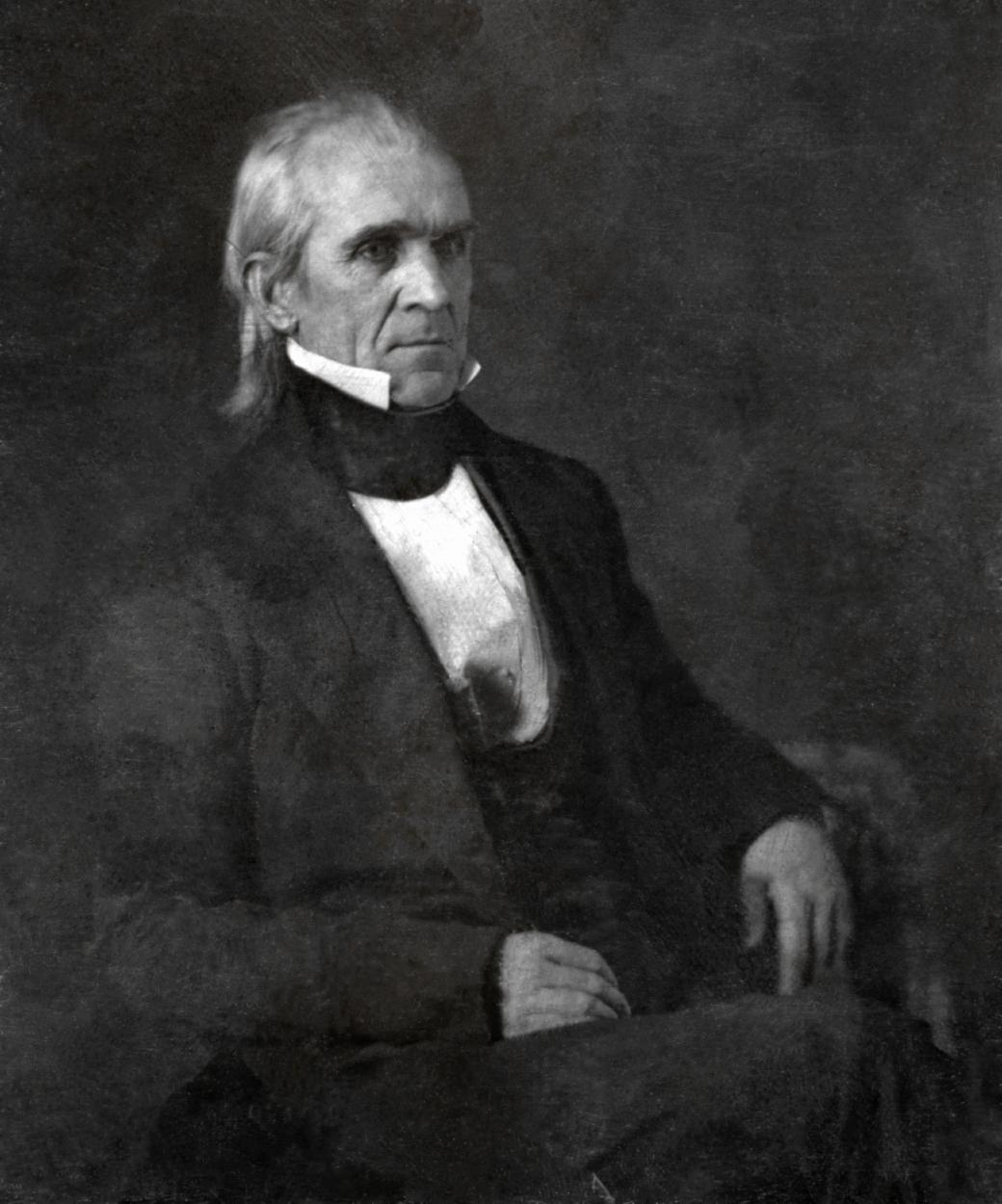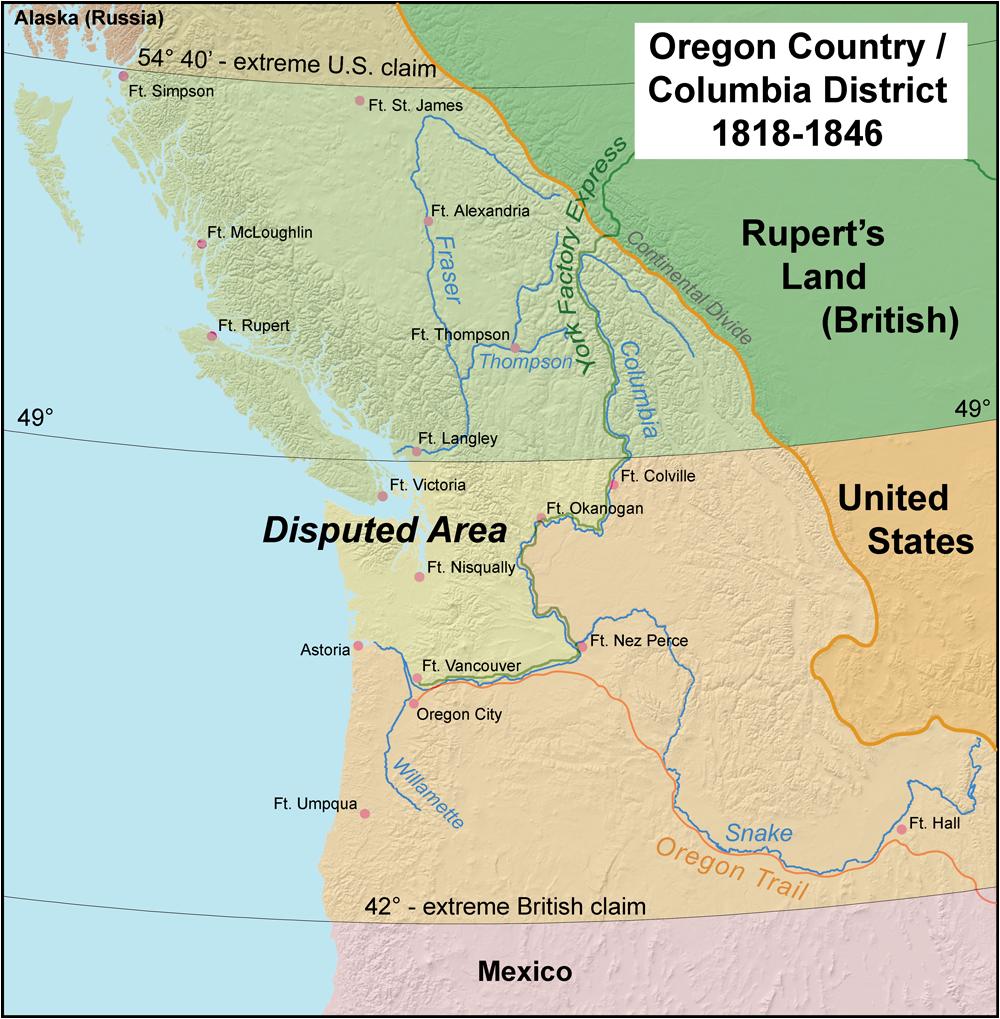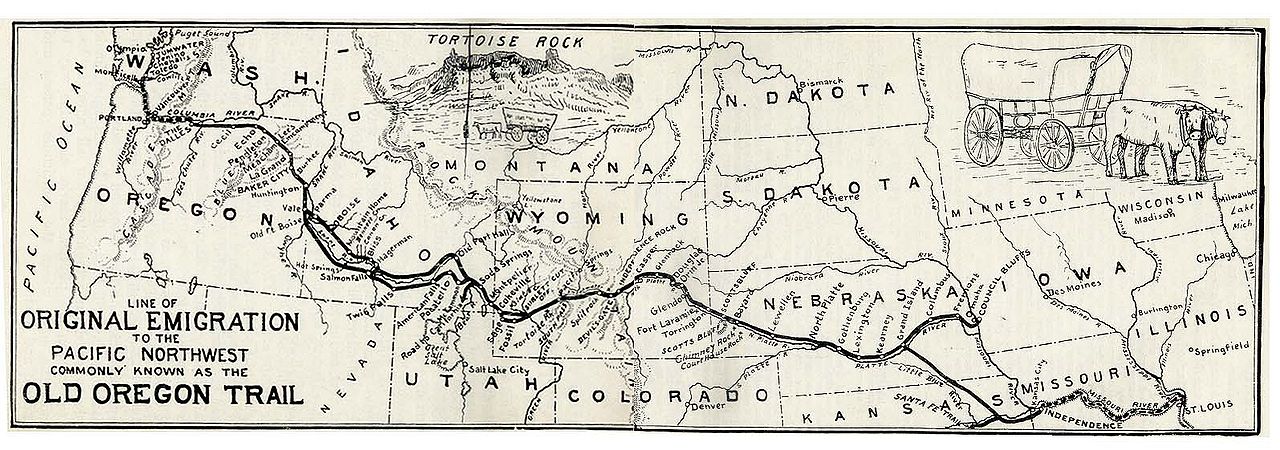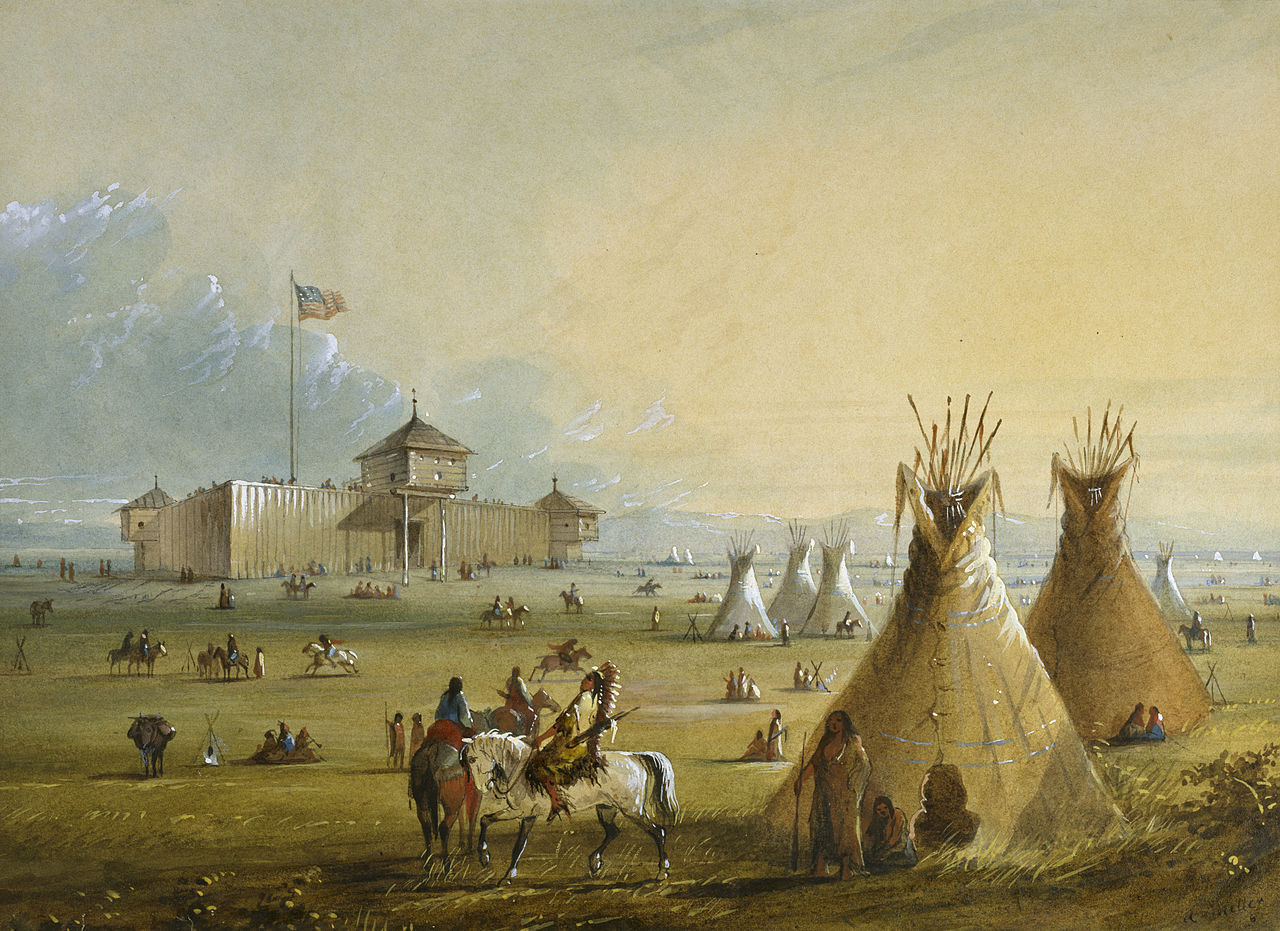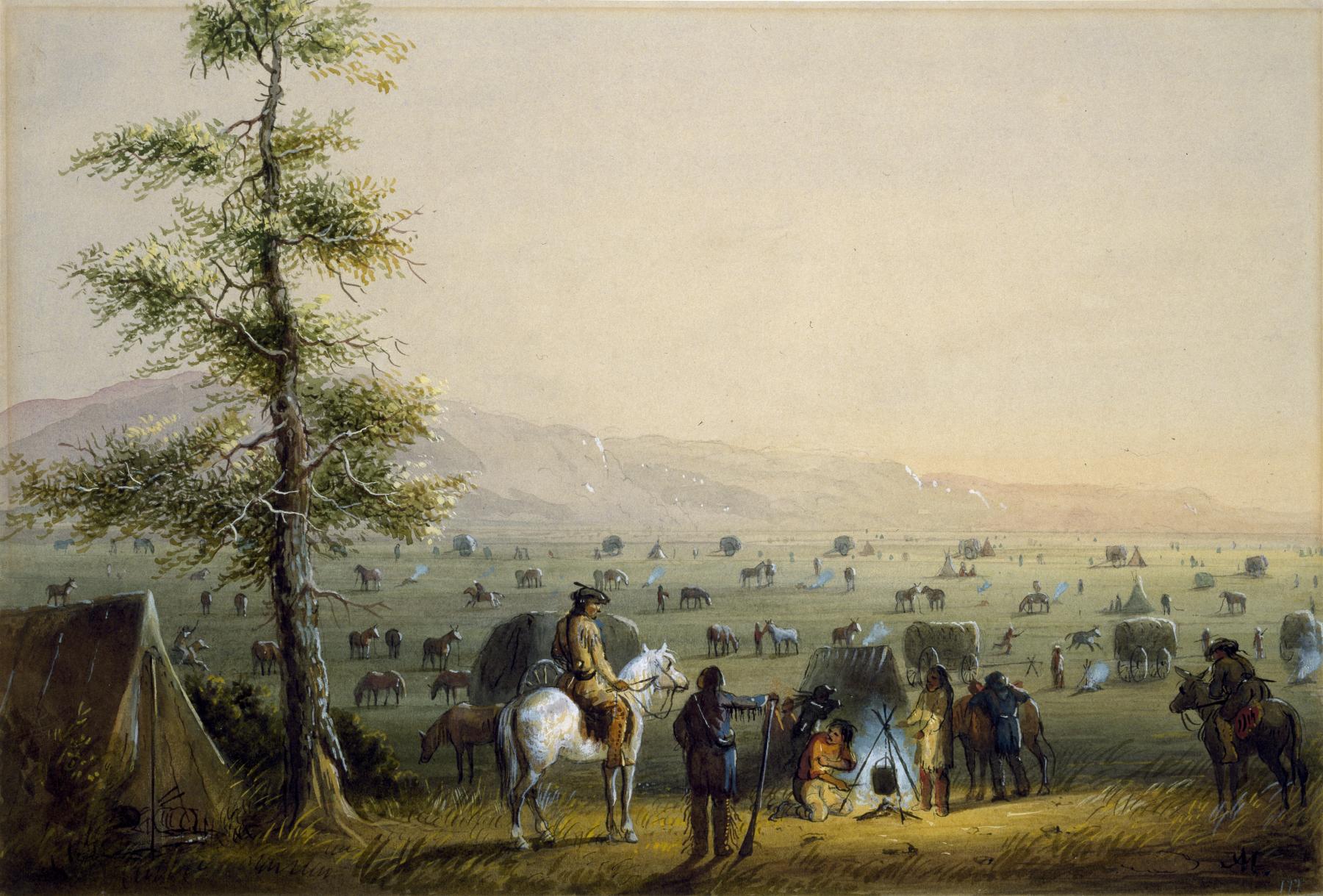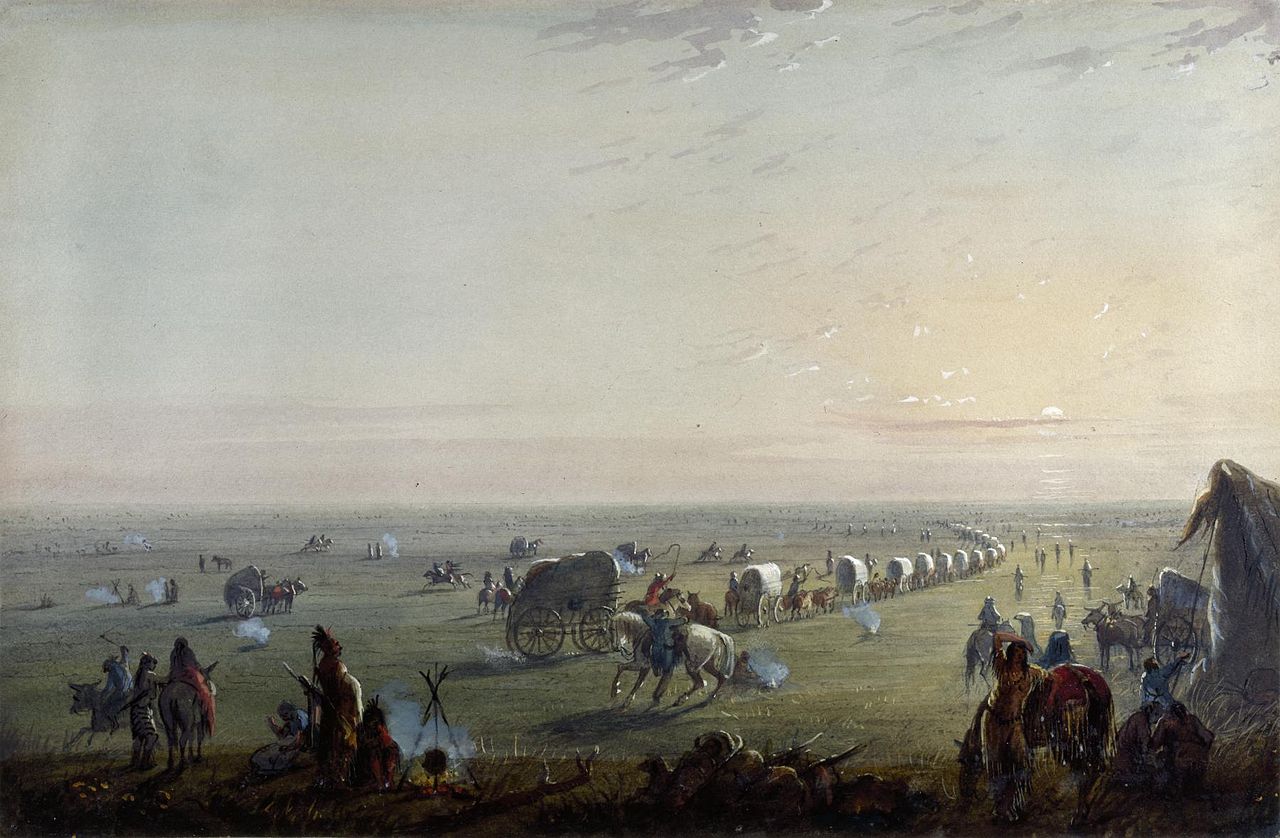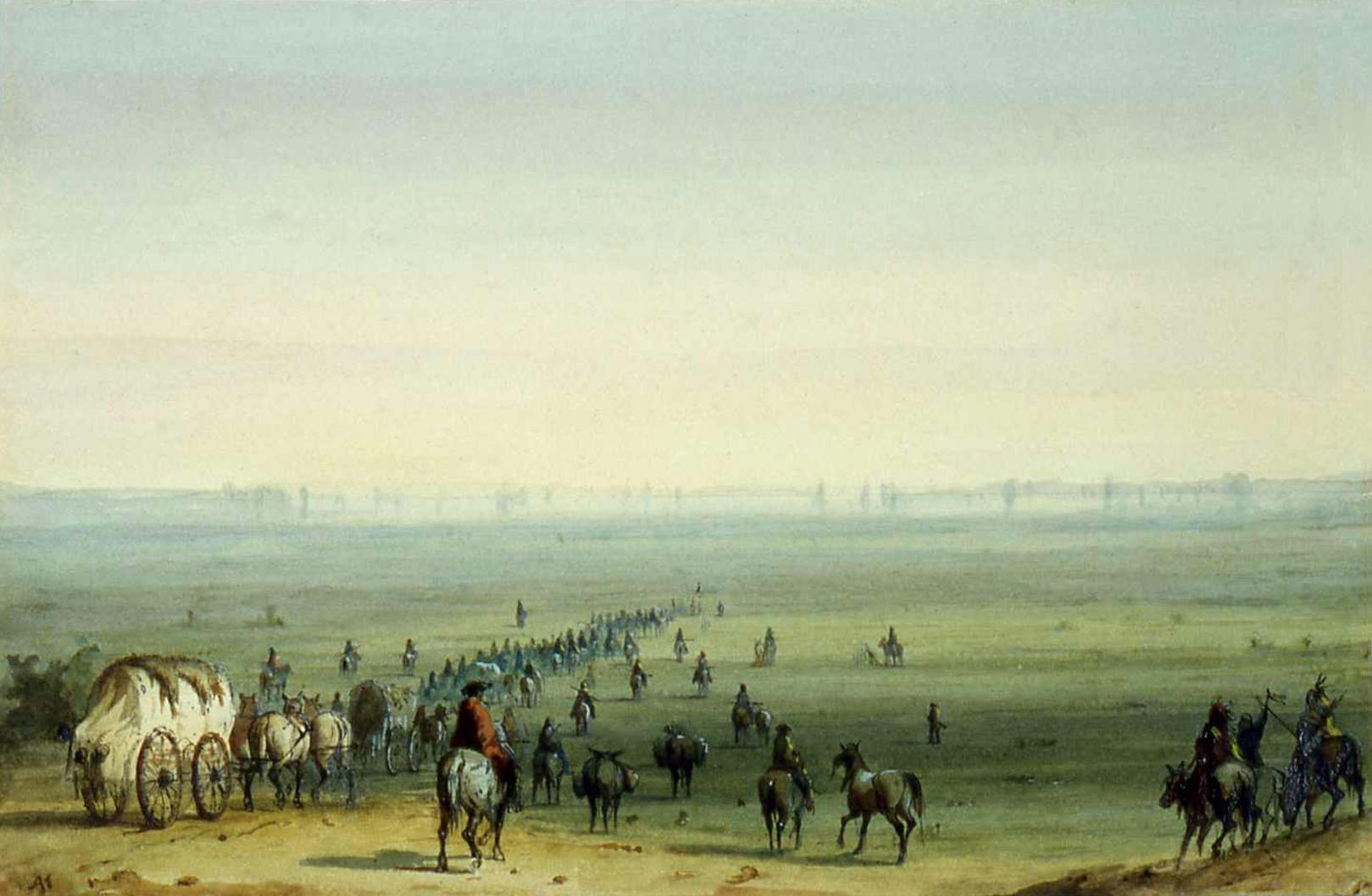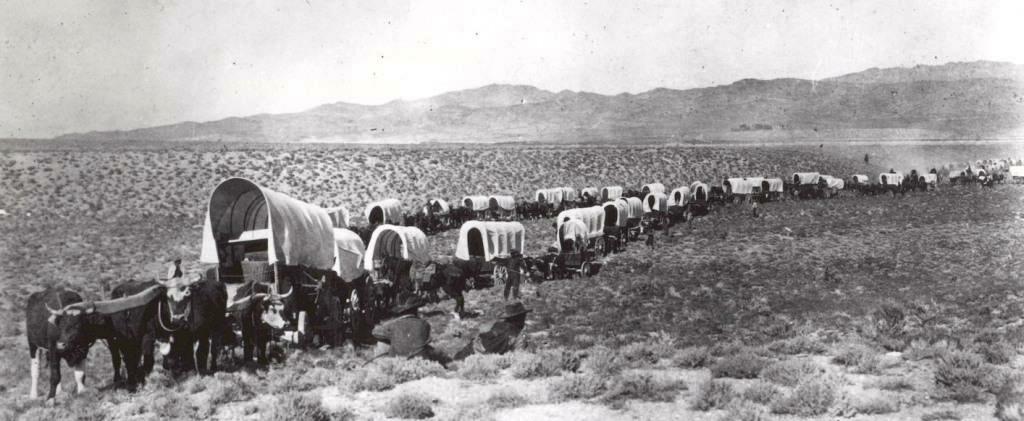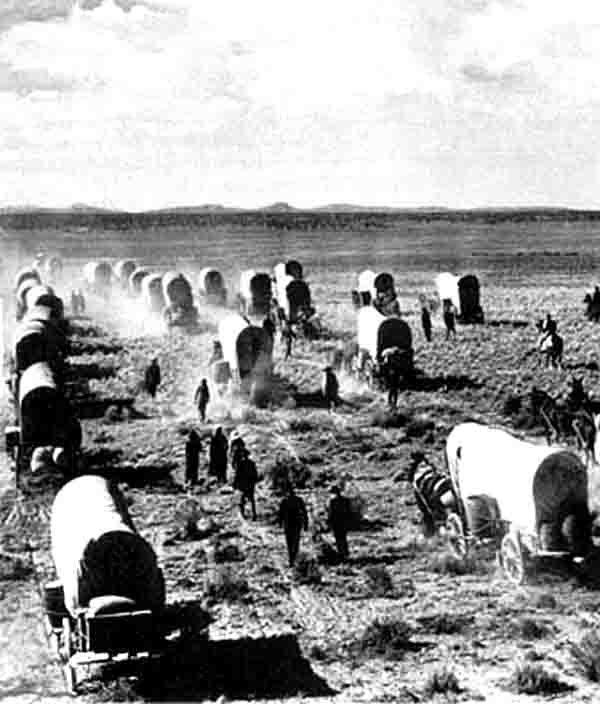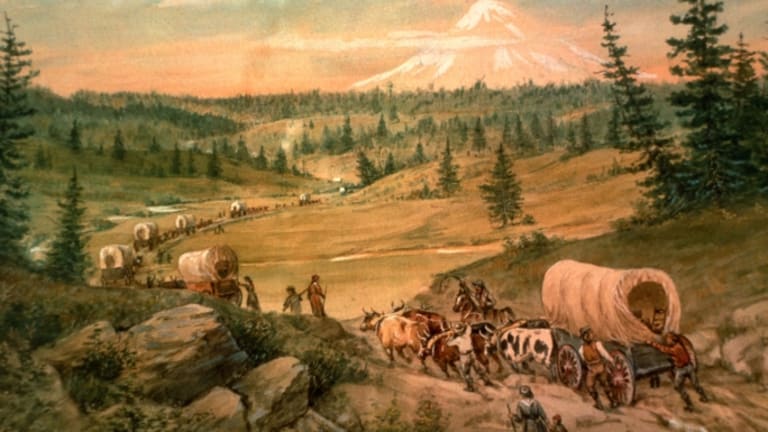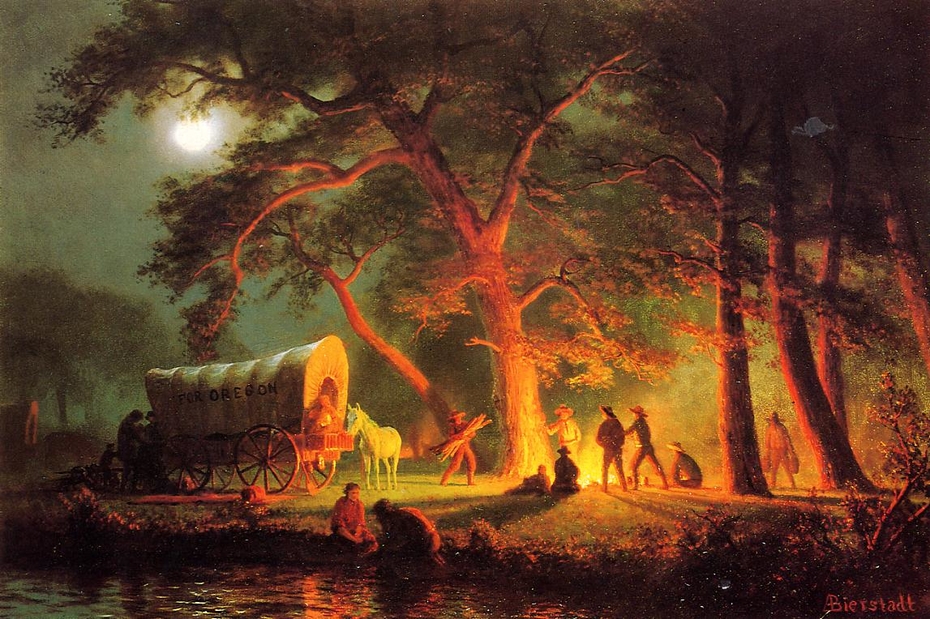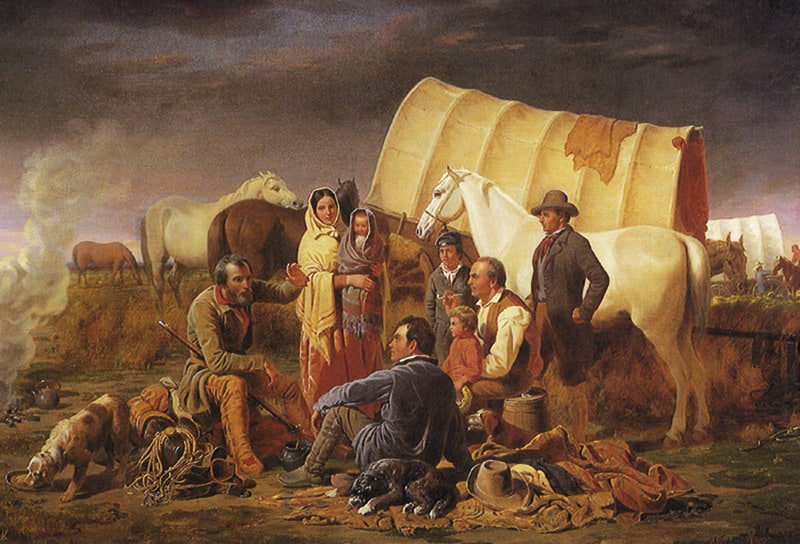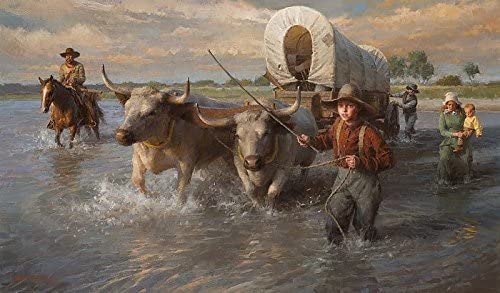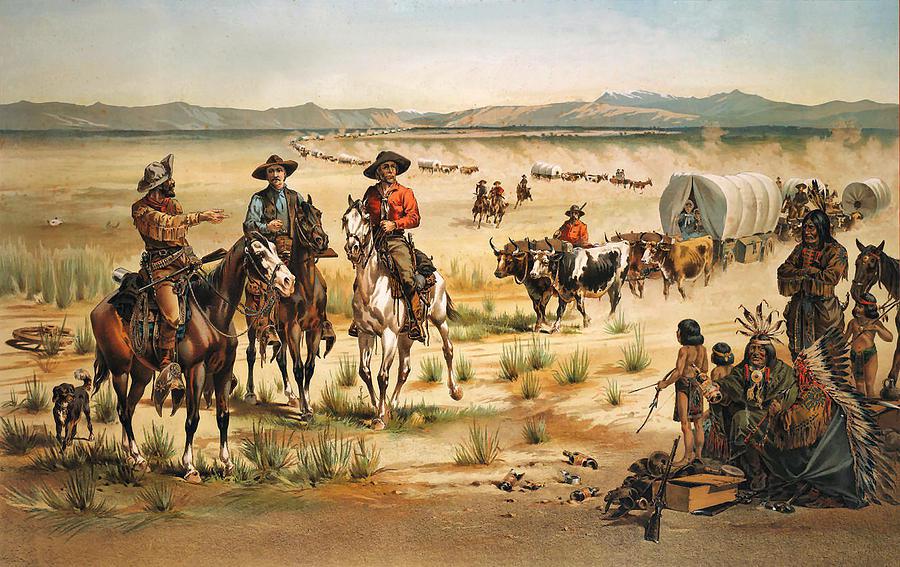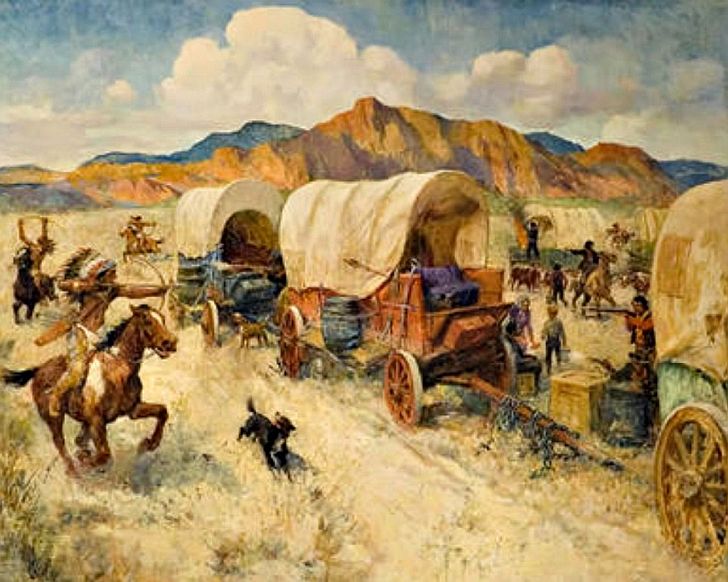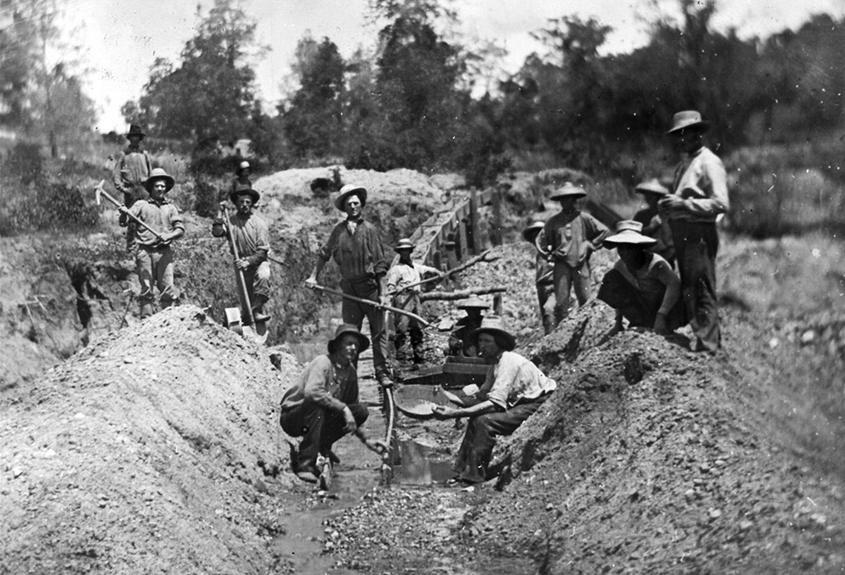7. EXPANSION ... AND DIVISION

"WESTWARD HO!"
 Oregon
Oregon
The textual material on this webpage is drawn directly from my work
America - The Covenant Nation © 2021, Volume One, pages 259-261.
A Timeline of Major Events during this period
Gold was discovered in 1848 at Sutter's Mill, California and soon thousands of "Forty-Niners" were making their way to California in the hopes of getting rich. Only about one in a hundred made any real money from the venture |
|
Gold in the American West.
But soon many using the Oregon Trail were merely passing through Oregon on their way to California, where gold was discovered in 1848 at Sutter's Mill, fifty miles upriver from Sacramento in northern California. Almost immediately the Oregon Trail had become a flood of migrants - the "Forty-Niners" (1849) - mostly male, heading to the goldfields of California in the hope of striking it rich (only about one in a hundred would find success however). By 1855 some 300,000 Americans had made their way to California, some by the Oregon Trail, some by the long sea route around South America, in either case a long, arduous journey. What they found when they arrived, besides a vastly beautiful landscape, was a wild, unruly collection of hard-working, hard-drinking prospectors, mixed in with thieves and con-artists, prostitutes, and a handful of lawmen trying to build some kind of social order out of the chaos. This was natural man. But it was hardly the kind idealized by the 18th century Frenchman Rousseau (and nearly all comfortable intellectual-utopianists since then), supposing what man in his natural (that is, pre-civilized) state was like. The reality of the West was that it was a dangerous place where survival itself was not guaranteed. It made for very rough personalities and very rough behavior, men and women alike. But it also produced a tough breed of Westerners. The pattern was very similar elsewhere in the West, especially when gold was discovered in Colorado and Arizona, the latter necessitating the creation of the Santa Fe Trail to the American Southwest. These gold rushes produced virtually overnight towns founded on this wild social order, towns which would just as quickly turn to ghost towns when the gold ran out and the gold-hungry citizens moved on to new fields. But some places, such as San Francisco (the transportation and financial center for the fast-rising economy of Northern California) would indeed turn themselves into more conventional-looking American cities as middle-class life began to replace the unruly culture of gold prospecting. By 1850, Manifest Destiny had a full plate in just trying to bring the West into the older American social mainstream.
|


When rumors of gold or silver became public, thousands of people would head to the site and overnight frontier towns would come into being

Placerville, California during the boom times
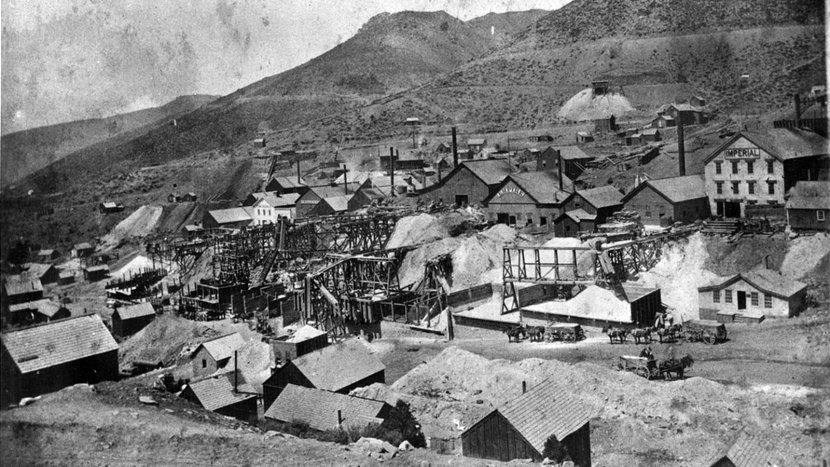
Quartz mining in Gold Hill, Nevada
But when the minefields played out, just as quickly these became ghost towns ... dotting the Western landscape

Bodie, California - a ghost town when the mineral wealth ran out. Founded with the discovery of gold in 1859, at its peak it had 10,000 living there
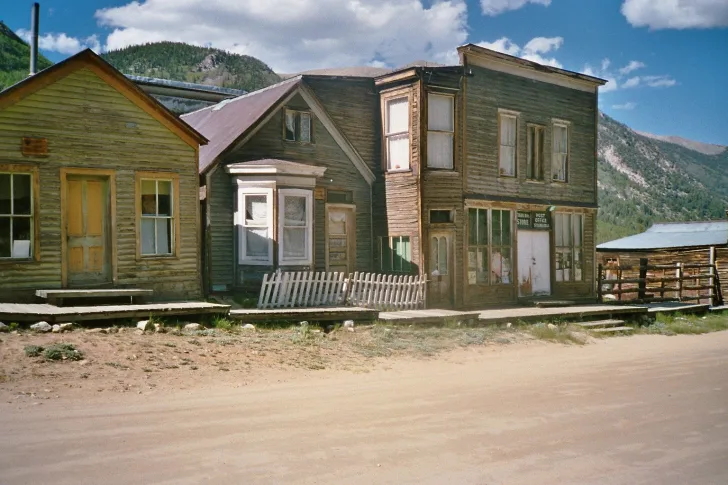
St. Elmo, Colorado - another ghost town shaped by the fortunes of gold and silver. At its height in the 1880s it had about 2,000 people living there
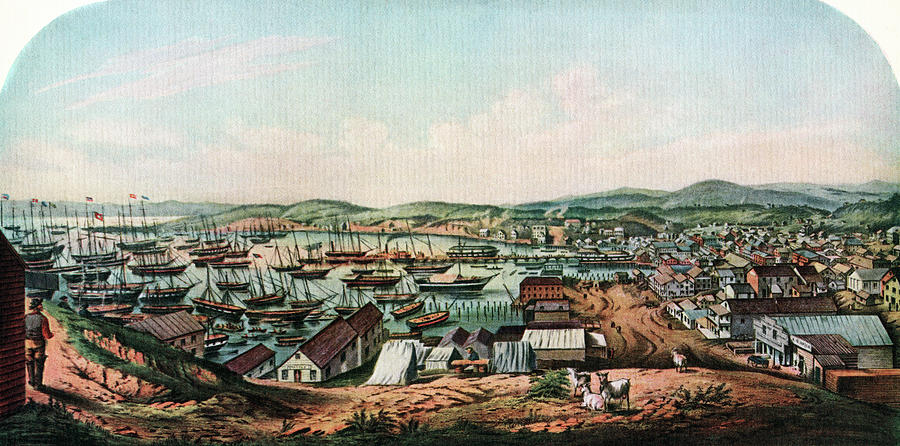
However San Francisco (1850 in this illustration), a major seaport opening the West to new settlers, remained a bustling city.
And some individuals, such as Samuel Brannan and Levi Strauss, made fortunes
not in the gold business ... but in supplying the Forty-niners
the tools (Brannan) and clothing (Strauss) they would need.
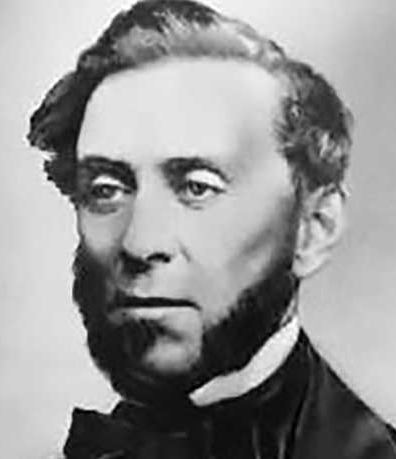
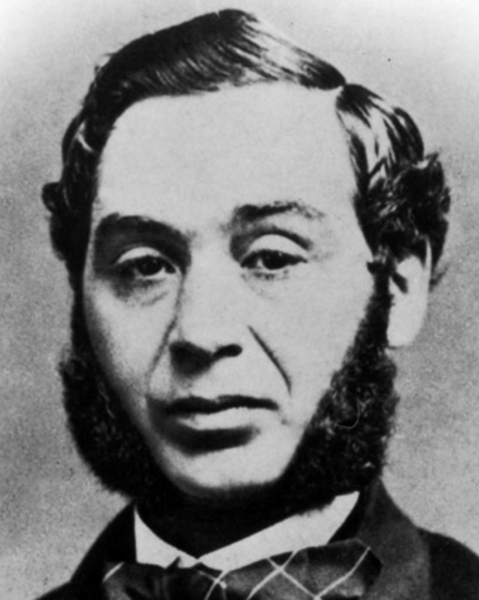

Go on to the next section: The Growing Conflict over Slavery
 Miles
H. Hodges
Miles
H. Hodges
 Miles
H. Hodges
Miles
H. Hodges
